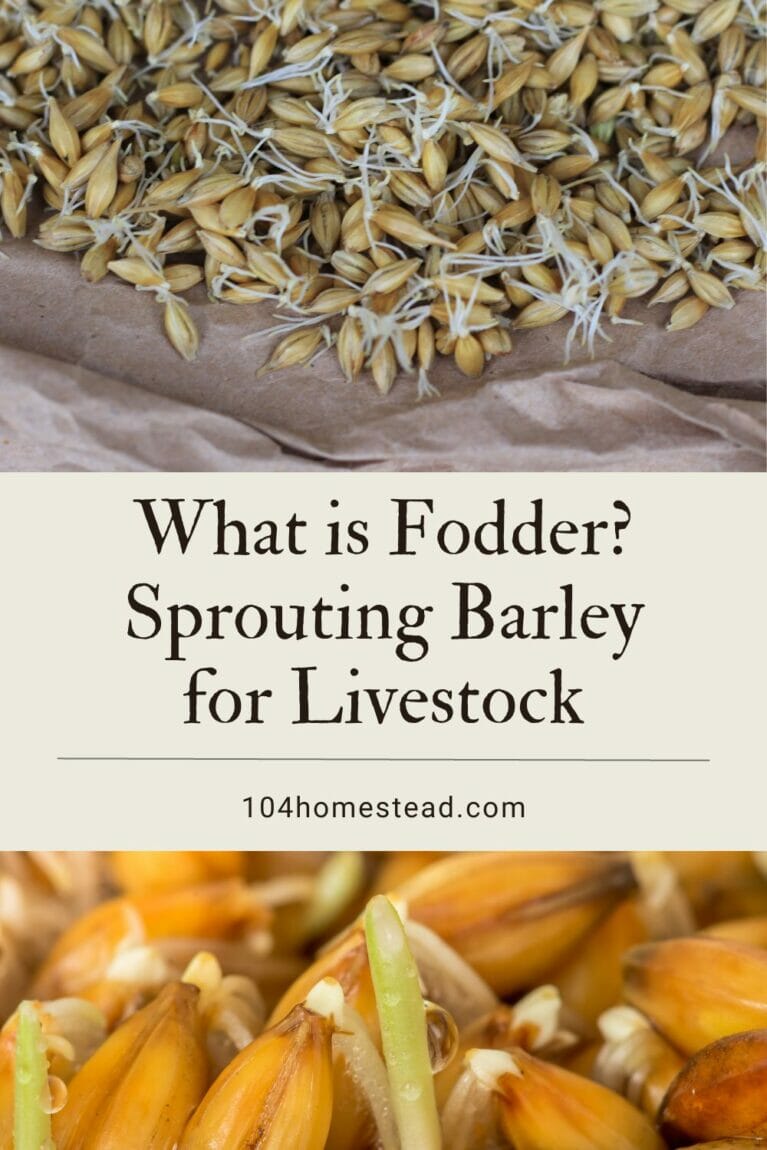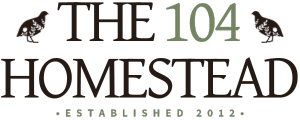What is Fodder? Is it Right for Me? Sprouted Barley for Livestock
Fodder is germinating seeds and feeding the entire seed and sprout to your livestock. Find out how to sprout barley seeds for fodder.
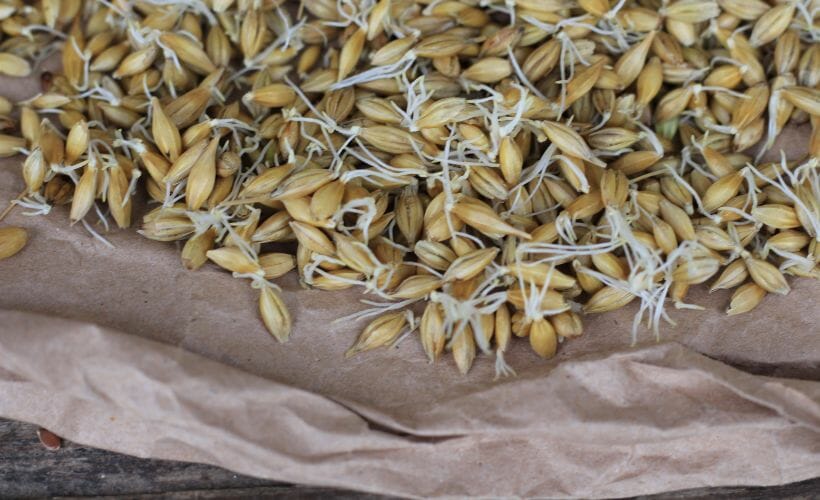
Sprouting fodder is something farmers have done for generations. Fodder is defined as food, especially dried hay or feed, for cattle and other livestock. Sprouting fodder grows the fodder and allows the livestock to eat it at a young stage. This feeding technique can offer a varied diet for livestock at a fraction of the price of traditional feeds.
Most often the seeds used for fodder are barley, alfalfa, millet, oats, wheat, grain rye, ryegrass, buckwheat, field peas, clover, sunflowers, and sorghum. Although you can sprout a variety of grains, today I’m going to chat about sprouted barley because it’s a great all-around grain for livestock.
Can You Use Barley Seeds for Fodder?
Barley is one of the most nutritious small grains. It’s easy to store and easy to grow. It’s also one of the most cost-effective grains to sprout. One pound of seed will produce about seven pounds of fodder. Sprouted barley is considerably easier to digest than dry grains which mean more vitamins, minerals, and proteins.
Sprouted grains offer healthy, nutritious greens even in the dead of winter. It takes very little effort and lowers our animal feed costs. My goats and chickens absolutely love this special treat. Plus, the nutrition from chlorophyll and beta-carotene translates to healthier eggs and milk. Score!
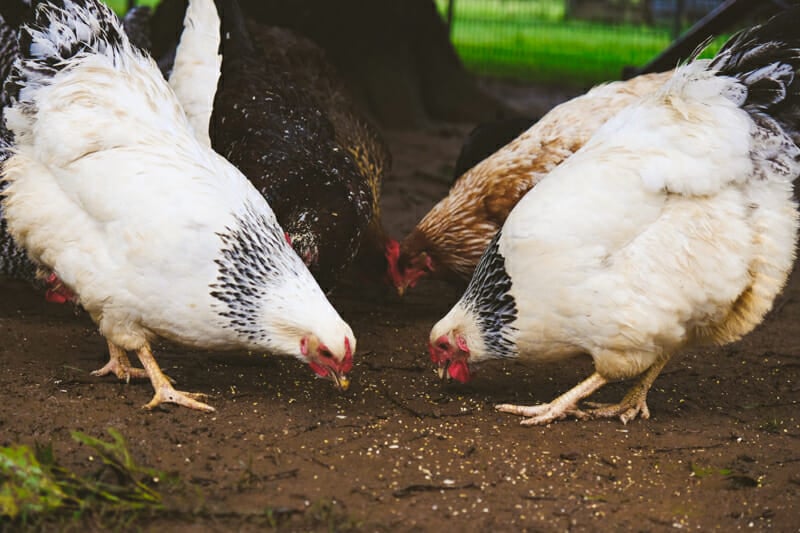
Where to buy barley seed for fodder?
I buy my barley seeds on Amazon because I didn’t love the seed quality I was finding locally. It’s actually cheaper to buy online! I buy from Joseph’s Grainery. They have great pricing, a quality product, and free shipping.
Hancock Seed also offers a wide variety of fodder seeds that are worth checking out. They have an excellent customer service team that can help guide you to the proper seed for your needs.
Can you use hulled barley for fodder?
If you use barley for your fodder make sure that it is unhulled. Unhulled barley has the hull/husk still intact and whole. It still has the germ which in turn will germinate, allowing it to grow and sprout. Hulled/pearled barley has lost its outer husk and its bran layer, and it has been polished so it will not sprout.
How Much Fodder to Grow?
There’s no magic number, but here are the rough amounts that I feed the animals on our homestead. The amount is in completed fodder weight, not seed weight. Remember, there is a 1:7 ratio with sprouted barley (1 lb of barley seed will produce ~7 lbs of sprouted fodder).
- Chickens 1.6 oz per bird in the spring and summer; 2.4 oz in the late fall and winter.
- Ducks 2.4 oz per bird in the spring and summer; 3.6 oz in the late fall and winter.
- Quail .7 oz per bird in the spring and summer; 1 oz in the fall and winter.
- Goats (dwarf) 1.5 lbs per goat in the spring and summer; 2.5 lbs in the fall and winter.
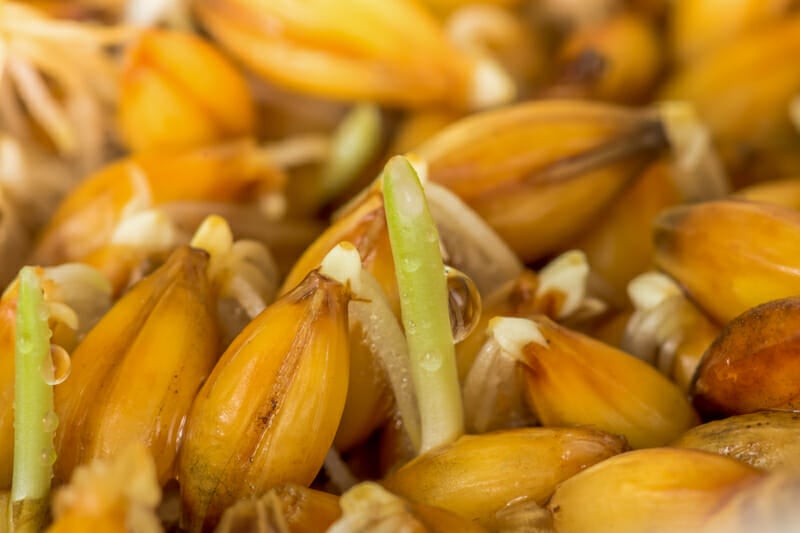
Now I don’t actually go out and give each of the poultry that exact ration (though I do for the goats). I put in a 2 1/2 lb seed mat once a day for the chickens and ducks (20 birds) to share and about 1 lb for the quail (18 birds) in the spring and summer and a bit more (broken into two feedings) in the late fall and winter when the birds don’t have the ability to forage for greens.
How to Sprout Barley
Here’s a great instructional video that can probably explain the hydroponic fodder system process better than I can.
Can you use oats for fodder?
Yes! According to YouTuber James Price, barley can be hard to source down south, so he’s successfully set up an oat fodder system using buckets. You can see his setup here.
Can you use lentils for fodder?
Yes! The Silver Fox Farm uses lentils with their chickens because of their affordability and he finds them easy to access. There is a word of caution not to use split lentils. You can see their process here.
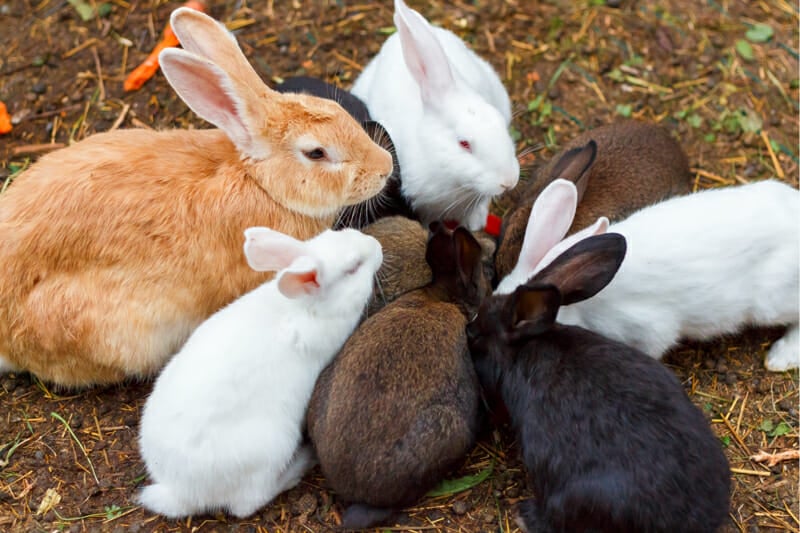
DIY Fodder System Hints
Save a few dollars and get containers from the dollar store. We spent $2.50 a piece for ours and they’re practically identical to his. Because I’m not tall enough for a setup like his, I do what he suggests and have a three on one side, and four on the other.
If you combine your sunflower with the barley (no more than 5% of the mix should be sunflower), it eliminates the mold and mildew issues as well as the growth issues he mentions.
Although I understand his concern about using the “dirty” soaking water to flush the system, I use the soaking water to flush and haven’t ever had a problem. If water conservation is important to you, feel free to give it a try.
